Best Orthotics for Kids with Moderate or Strong Pronation – Let’s Treat Your Child’s Foot Condition!
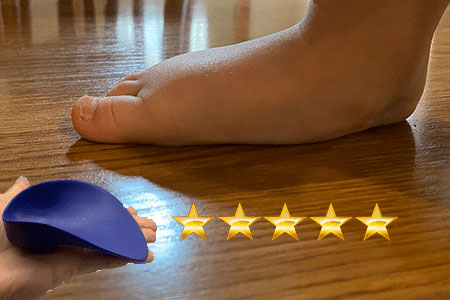
Has your child’s walking or running changed recently? Are they tripping or falling more often? While some parents are told their child’s flat feet or walking issues will resolve on their own, many kids with moderate or strong pronation need more support. Early intervention with orthotics for kids can help prevent future problems and improve their gait and posture.
Trust your instincts as a parent—you know your child better than anyone else. If something feels off with their feet, don’t ignore it. I’ve helped hundreds of children with flat feet improve their walking, balance, and overall comfort just by fitting them with the right shoes and orthotics.
Is it Normal for Children to Have Flat Feet?
Between the ages of one and five, it’s completely normal for kids to have flat feet—almost every child under four does. However, not all flat feet are the same, and the severity can vary. Early intervention can make a big difference, so why wait for your child to get older when misalignment could worsen?
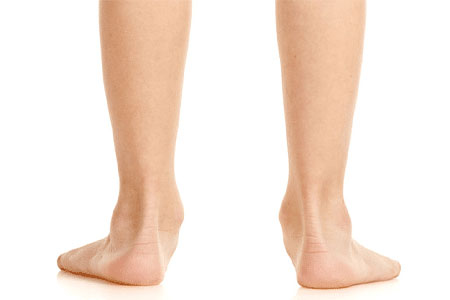
Children under the age of five don’t have pain, they don’t complain, but they have a treatable condition. At the age of six, children are not supposed to have flat feet.
Can Orthotics Help Children with Flat Feet?
Orthotics are motion control devices that provide support to key areas of the foot. The correct type of orthotics can improve your child’s walking gait and overall posture tremendously. If we can isolate the foot structure early enough with the correct type of orthotics, we can save a child from many different conditions along the line.
Images of Children with Moderate and Strong Pronation

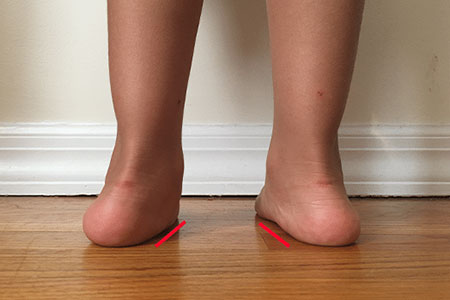
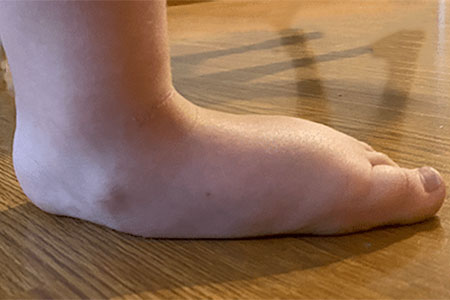

Why Orthotics Matter
Orthotics are specially designed inserts placed inside shoes to correct and support the natural alignment of the foot. They help to distribute pressure evenly across the foot, alleviate pain, and improve overall foot function. For children with moderate or strong pronation, orthotics can be life-changing, enabling them to move comfortably and confidently.
Before and After: The Impact of Orthotics
Parents often wonder about the effectiveness of orthotics. While each child’s experience will differ, many see a remarkable improvement in comfort and function.
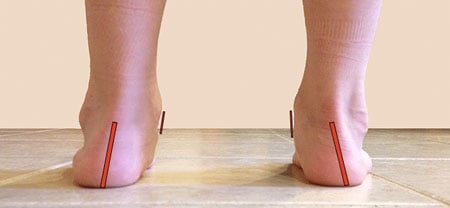
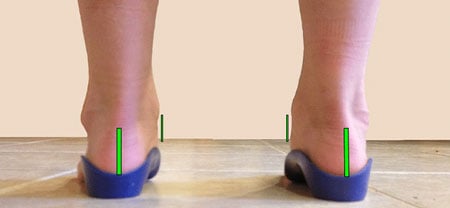
Key Features of Kids’ Orthotics
Most parents of children with flat feet make the common mistake of assuming that they need to find an orthotic that provides good arch support. When a child has a flat foot, you don’t only support the arch, you mechanically support the pieces of the foot that cause the foot to be flat such as the heels.
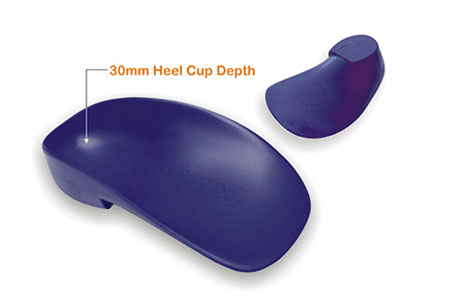
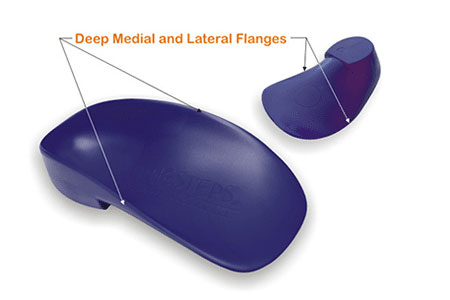
My Experience as a Shoe Fitter
I work closely with physical and occupational therapists to find out what works best for children. This collaboration ensures that the orthotic solutions we offer are not only effective but also tailored to each child’s specific needs. By integrating expertise from various fields, we can provide a comprehensive approach that addresses all aspects of foot health and development.
One of the most recommended options for kids with moderate or strong pronation is LittleSteps orthotics. These orthotics are specifically designed to support children’s feet by providing the necessary structure and alignment. Made from high-quality materials, LittleSteps orthotics are both durable and comfortable, ensuring that your child can wear them throughout the day without discomfort.
Best Orthotics for Kids with Moderate or Strong Pronation
The design of LittleSteps orthotics helps to guide the foot into a more natural position, reducing strain and improving function. This correction not only alleviates immediate discomfort but also supports proper foot development.
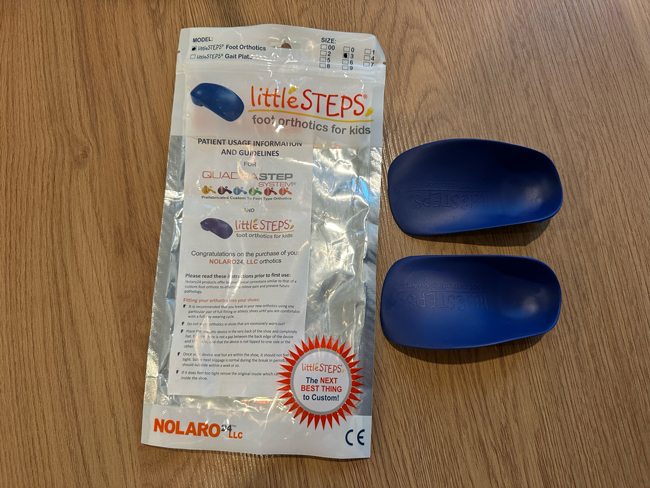
1. Order littleSTEPS® Orthotics from their official website. You must submit a Referral Code to complete your order: JVFCS100121
2. It’s not necessary to remove the original insoles of the shoes when fitting this orthotic.
3. The 3/4 length design makes it easier to fit into various shoe styles.
4. Take a look at this chart to figure out what size to order based on your child’s shoe size.
What Type of Shoes Are Best for Orthotics?
Orthotics work best when paired with supportive shoes. Shoes should provide a stable base, with features such as a firm heel counter, a wide toe box, and a flexible sole. These features collectively support the foot’s natural movement while providing the necessary stability and comfort.
1. Stable base of support: This helps keep the orthotic in place and distribute weight evenly across the foot to alleviate stress on the arches.
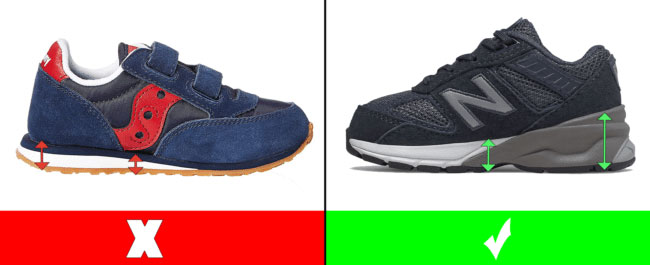
2. Firm heel counters: To support the heel and prevent excessive movement. This feature helps maintain proper heel alignment, reducing the risk of overpronation.
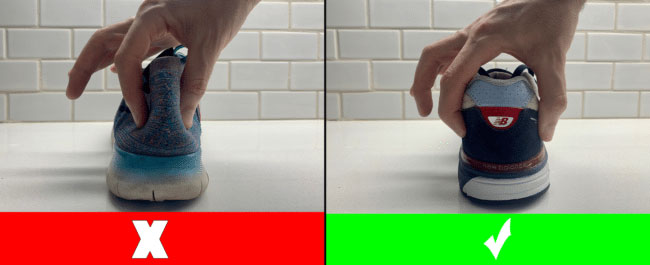
3. Correct amount of flexibility: To promote natural foot movement while maintaining support.
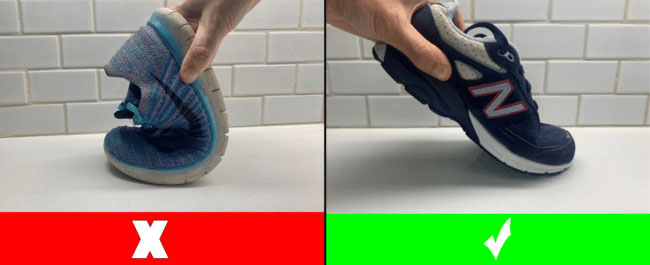
If you’re looking for the best supportive shoes for kids who wear orthotics, I’ve put together a helpful resource that highlights the top options on the market. These shoes are designed to work seamlessly with orthotics, offering features like a deep heel cup, flexible outsoles, and roomy toe boxes for maximum comfort and support.
Will Orthotics Make Your Child’s Muscles Weaker?
There is a common misconception when it comes to fitting a child in orthotics and supportive shoes. Orthotics don’t make the muscles “lazy” or “weaker”. They simply provide the child with structural support which is not going to take away from the musculature. This means that orthotics allow the child’s foot and leg muscles to develop on their own while supporting them.
Contact Me with Any Questions
If you have concerns about your child’s foot health or need guidance on selecting the right orthotics, please feel free to contact me via email. I’m here to help and can provide personalized advice based on my experience as a shoe fitter.
Flat feet might cause your child a biomechanics problem at some point in your child’s life. It might not be on the foot, it might be the knee, the hip, the back, all of the structures and joints above the feet depend on the feet.

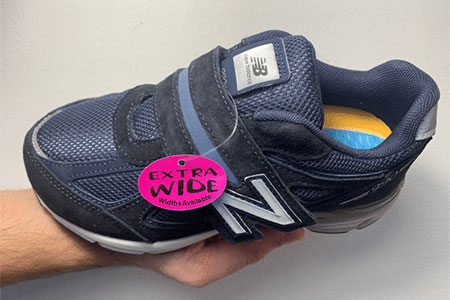
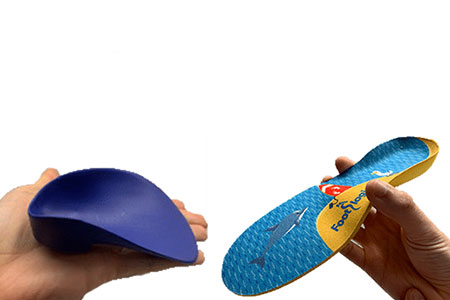
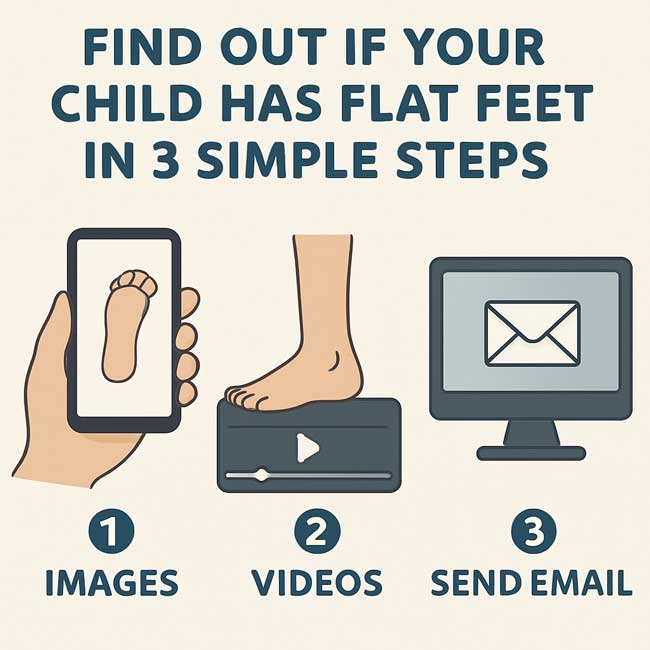
Hi there,
When ordering shoes to fit the orthotics in, do you have to size up to accommodate them? I’m ordering the littleSteps orthotics in size LS000, and New Balance 2002 Hook and Loop in size 5 for my 2.5 year old girl, and also these in size 5… https://amzn.to/4571fSL
My daughter has strong pronation and definitely needs the extra orthotic support.
Do you think the orthotics will fit and be comfortable to wear?
Thank you
Hello Tabitha,
You don’t need to size up to accommodate the littleSTEPs orthotics as they are 3/4 length and don’t take extra space inside the shoes. Just make sure that you get shoes that accommodate your daughter’s foot shape.
I also suggest that you make sure that you either pull the velcro straps or laces of the shoes comfortably tight so your daughter can get the full support and stability that the shoes/orthotics have to offer.
Let me know if you have any other questions.
Hi
Thank you for such a detailed report on orthotics . I am an adult with moderate to severe pronation . Do your recommendations stand for adults as well as children ? . I invested £350 in custom made orthotics a few months ago but they are really hard & sore under my feet after walking a short distance .
Any advice would be very much appreciated .
Thank you .
Hello,
I am glad you find the website informative.
I helped older children in their teenage years who were already wearing men’s and women’s shoe sizes, so I am familiar with adult shoes and orthotics as well.
If you tell me your shoe size and whether your are a man or a woman I will be able to guide you in the right direction.